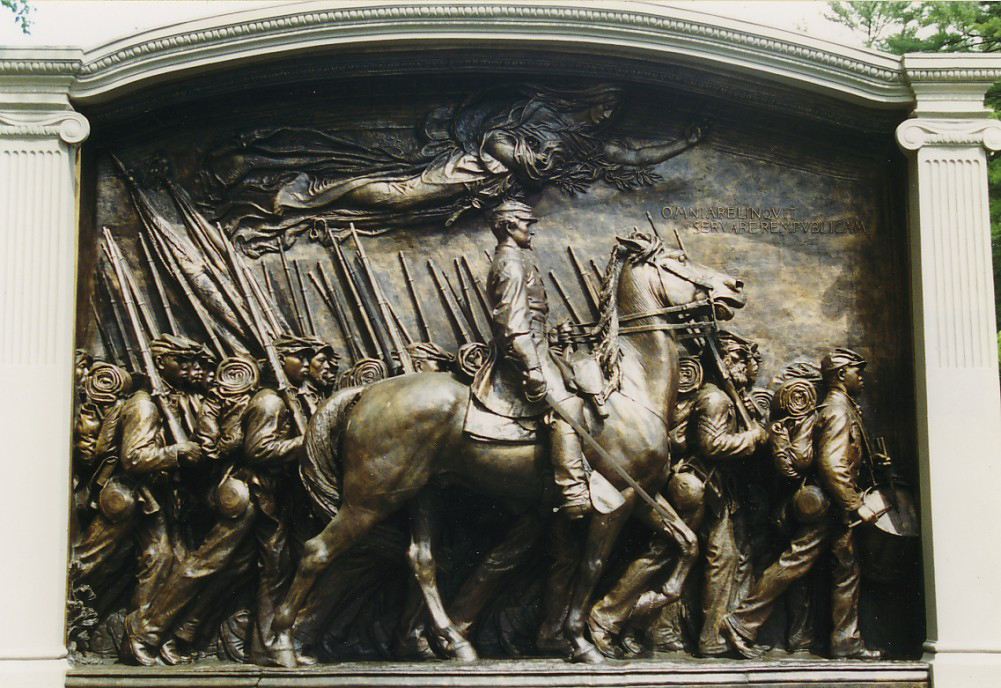
Robert Gould Shaw and the 54th Massachusetts Regiment Memorial

Boston, MA United States
Beacon Street opposite State House.
With the passage of the Emancipation Proclamation in 1863, regiments of volunteer African American soldiers were allowed to fight in the Civil War. The first instance was the Massachusetts 54th Volunteer Infantry, which was authorized in spring of 1863 under the command of Robert G. Shaw, an affluent, white Bostonian from a family of radical abolitionists, who lobbied for equal pay for black soldiers. The regiment’s most famous engagement was on July 18th, 1863, when Shaw led an attack Fort Wagner, and many members of the 54th—including Shaw himself—were killed.
Remaining soldiers in the regiment proposed a monument for Shaw following the battle, which Shaw’s father suggested should also depict fallen African American members of the unit. Due to continued racial tensions, however, the relief was not commissioned until 1883. The chosen sculptor was Augustus Saint-Gaudens, who had studied in Europe and drew inspiration from depictions of Napoleon on horseback. Saint-Gaudens hired over forty men to serve as models for the members of the regiment, making the relief one of the few representations of its time to show African Americans accurately, and not as demeaning stereotypes; it took Saint-Gaudens fourteen years to complete. Author Henry James described the relief as “real perfection.”
The memorial has since inspired several notable poems, the earliest of which was a reflection on Shaw by Paul Laurence Dunbar entitled “Robert Gould Shaw.” In it, Dunbar wonders what drew Shaw from “the slow blaze of Learning’s light”—an allusion to Shaw’s attendance of Harvard—and into the “hot terror of a hopeless fight.” Dunbar, an African American born in Dayton, Ohio in the early 1880s, who frequently wrote about racial prejudice, concludes, that “[Shaw] and those who with thee died for right/Have died, the Present teaches, but in vain!”
In 1960, Robert Lowell composed “For the Union Dead,” the titular poem of his 1964 collection, as an address to Shaw and to the memorial itself. Heavily influenced by Allen Tate’s “Ode to the Confederate Dead,” Lowell uses the monument to condemn changes in Boston, where “the Aquarium is gone” and “steamshovels were grunting/…to gouge their underworld garage.” He opens with a revision of the inscription on the memorial, which translates to “They relinquish everything to serve the Republic.” He describes the relief:
“Two months after marching through Boston,
half the regiment was dead;
at the dedication,
William James could almost hear the bronze Negroes breathe.
Their monument sticks like a fishbone
in the city’s throat.
Its Colonel is as lean
as a compass-needle.”
Upcoming Events
- There were no results found.
Events List Navigation
Events List Navigation
Did You Know?
Certain books were “banned in Boston” at least as far back as 1651, when one William Pynchon wrote a book criticizing Puritanism.